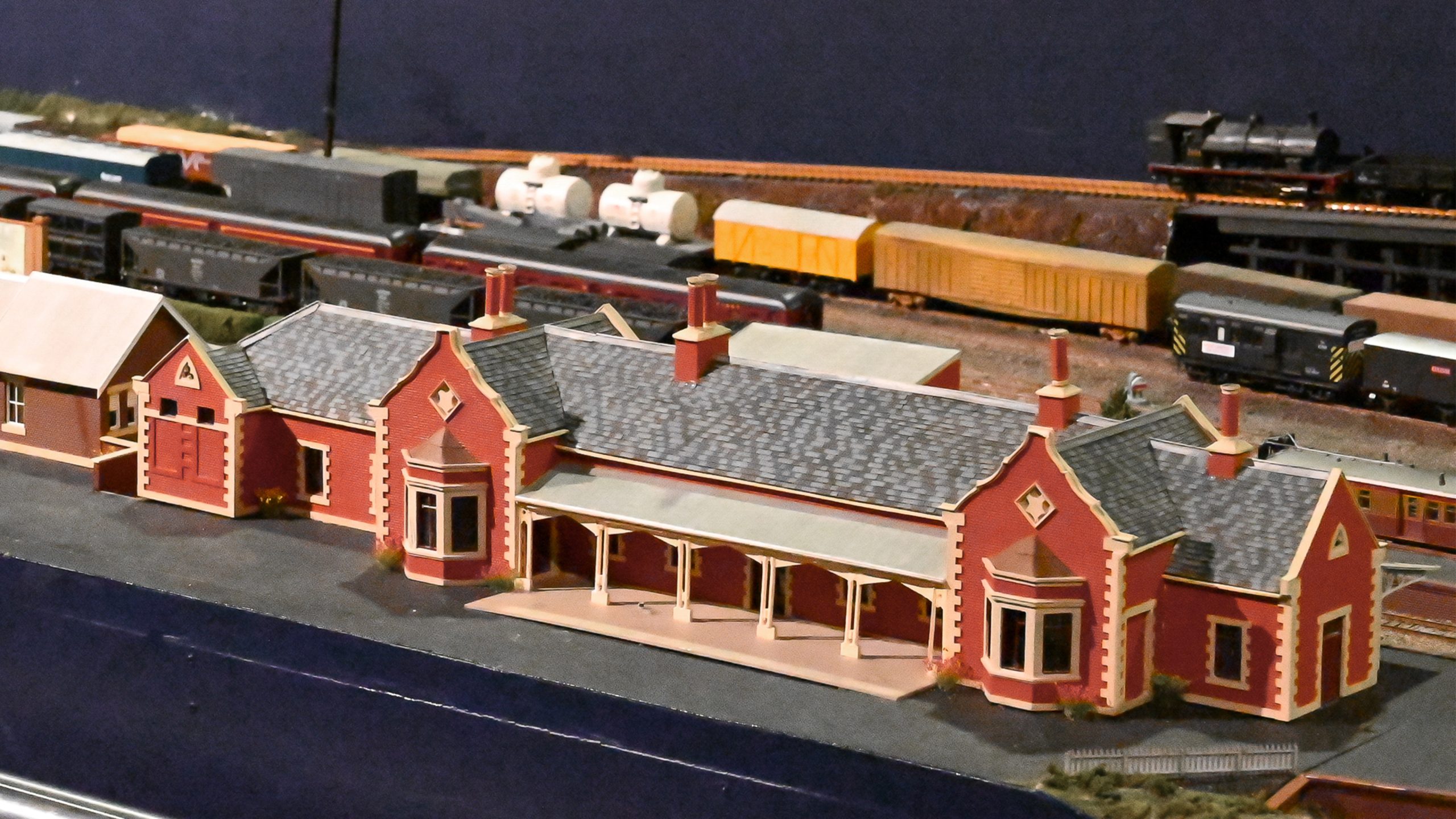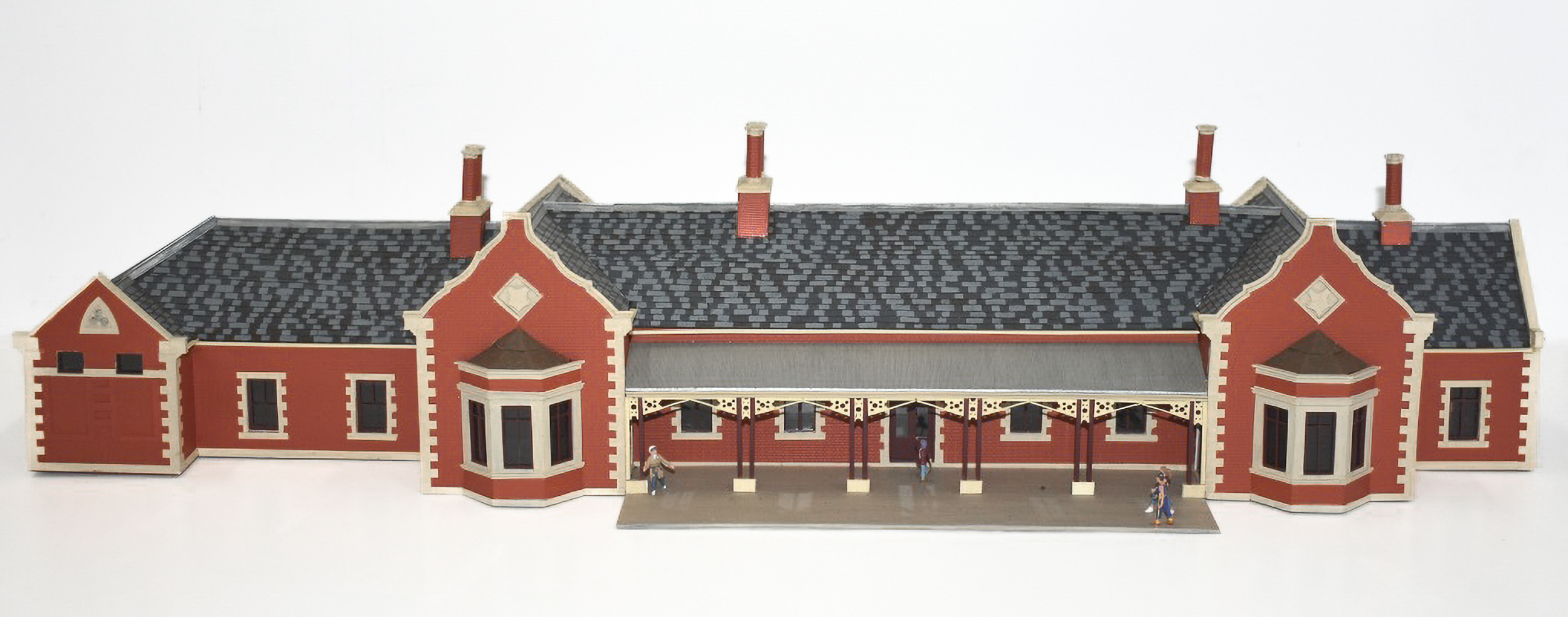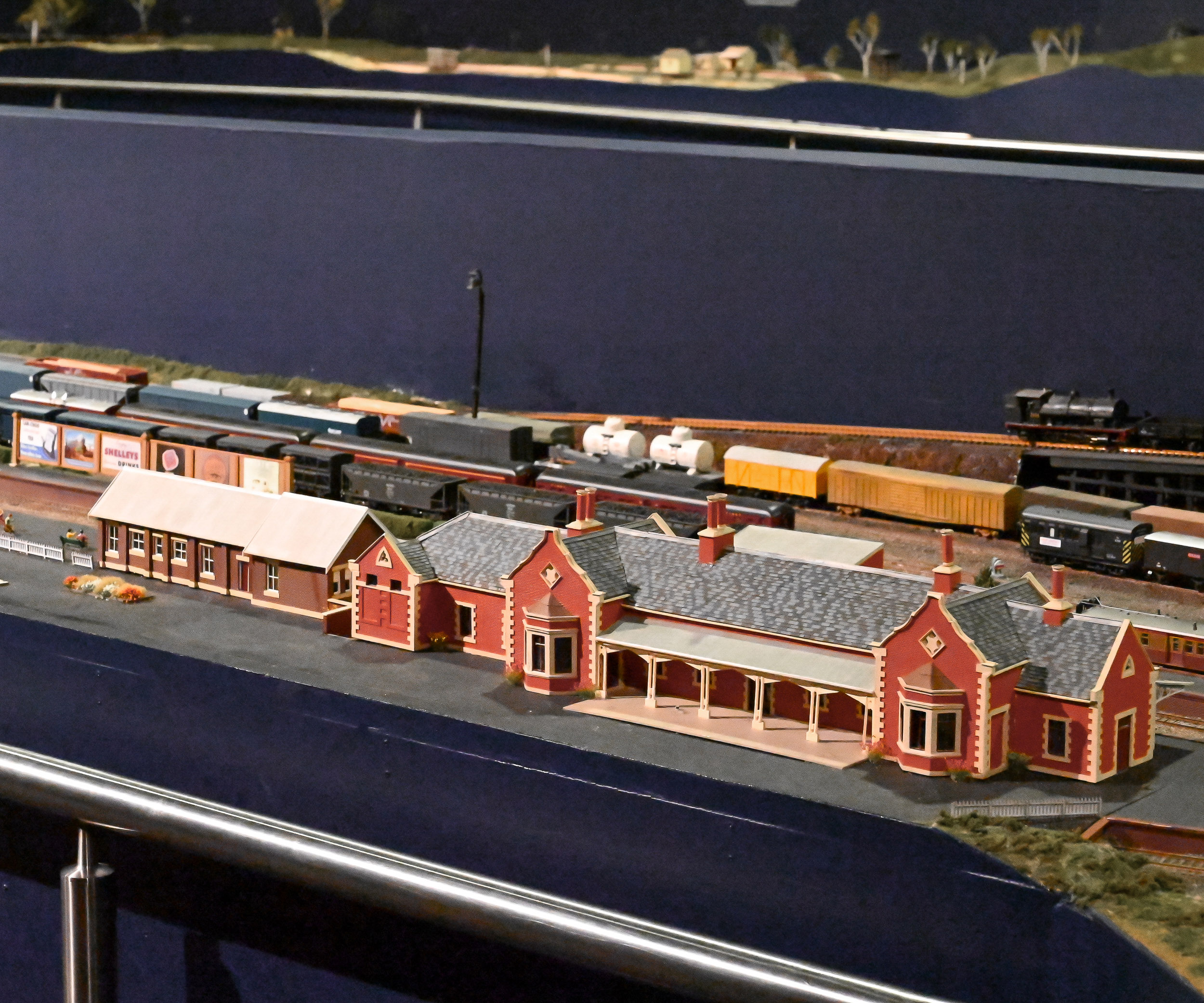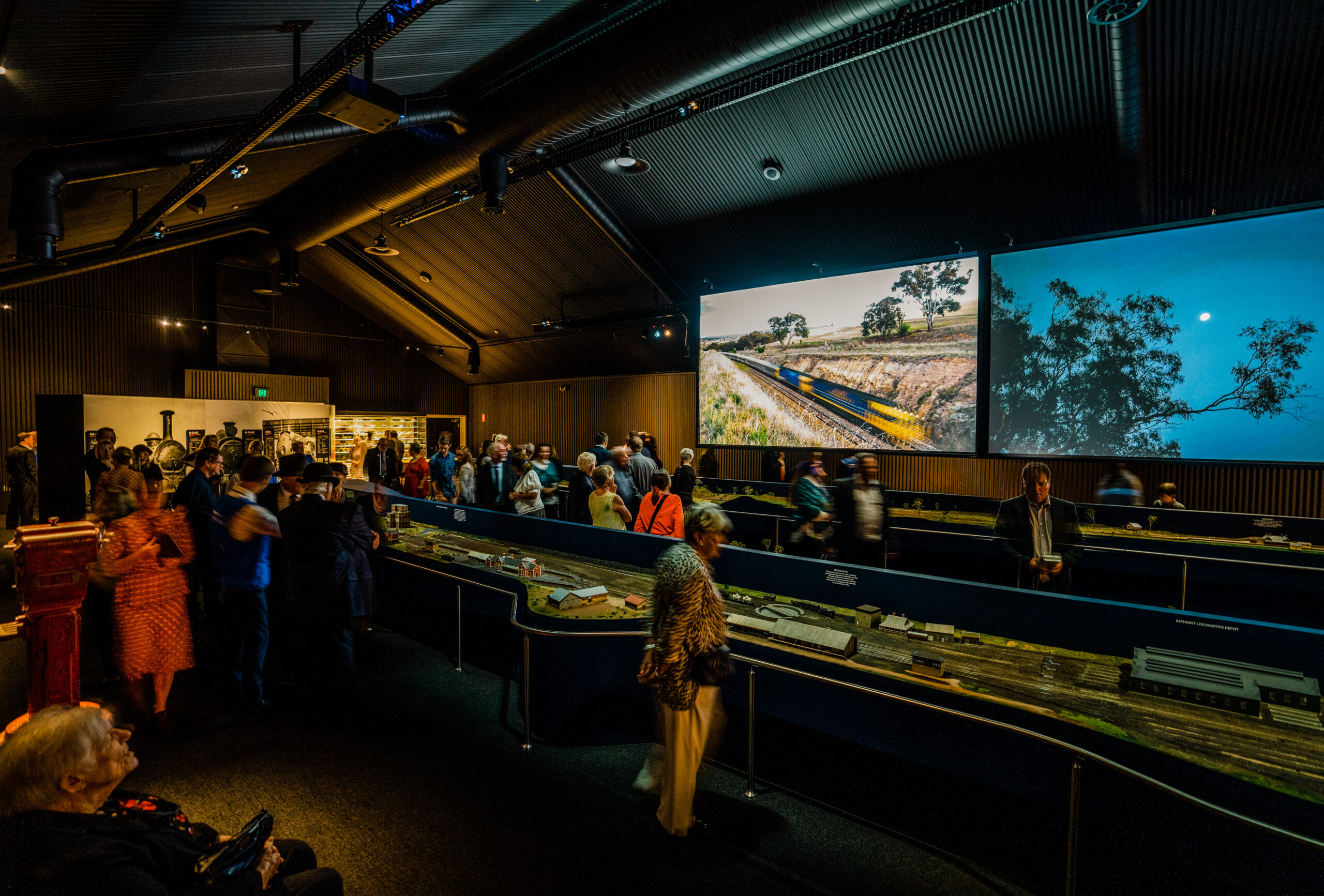‘The Handsomest Structure of its Kind’
Modelling Bathurst Station
Newspapers raved about Bathurst Station when it first opened in 1876, calling it ‘the handsomest structure of its kind on any of the lines out of Sydney.’ However, the engineer in charge of building the station, John Whitton, had cut a few corners to save costs.
As he had less capital than he wanted, the building was not actually finished at its official opening because Whitton knew that further additions would then come from the Railway Commissioner’s budget rather than his own. He also used timber posts to support the platform awning instead of more expensive cast iron columns.
Modelled on a local private home called Abercrombie House, the distinct mix of Gothic and Tudor styles made it an unusual addition to the NSW railway system. It is one of the few station buildings with faceted bay windows and the only one with scalloped gables on the roof.
But in another bid to save costs, Whitton did not repeat the scalloped gables on the rail side of the building. Stone was rarely used in Bathurst and Whitton did not import it from elsewhere, so only the quoins (external corners) and openings on the building are made of stone while the rest is brick.
In a touch of class, passengers entered the station through a central forecourt that had a large garden. Upon entering, visitors would admire the extraordinary number of rooms, including the Ticket Office, Telegraph Office, Waiting Room, Ladies Room, Porters Room, Luggage Office and Parcels Room (as well as toilets).
This model replica faithfully captures the unique features of the station building. It is part of the HO scale Layout (model railway) of the Main West Line from Tarana to Bathurst as it operated during the 1960s. The model railway was commissioned by the Hennessy family of Brewongle in 2003 and made by John Brown. It includes 370 metres of railway line, signals, buildings, and rolling stock.
The model railway was donated to Bathurst Regional Council in 2014 before moving to its current location at the Bathurst Rail Museum in 2020. It has become a miniature celebration of Bathurst’s place in local railway history.






